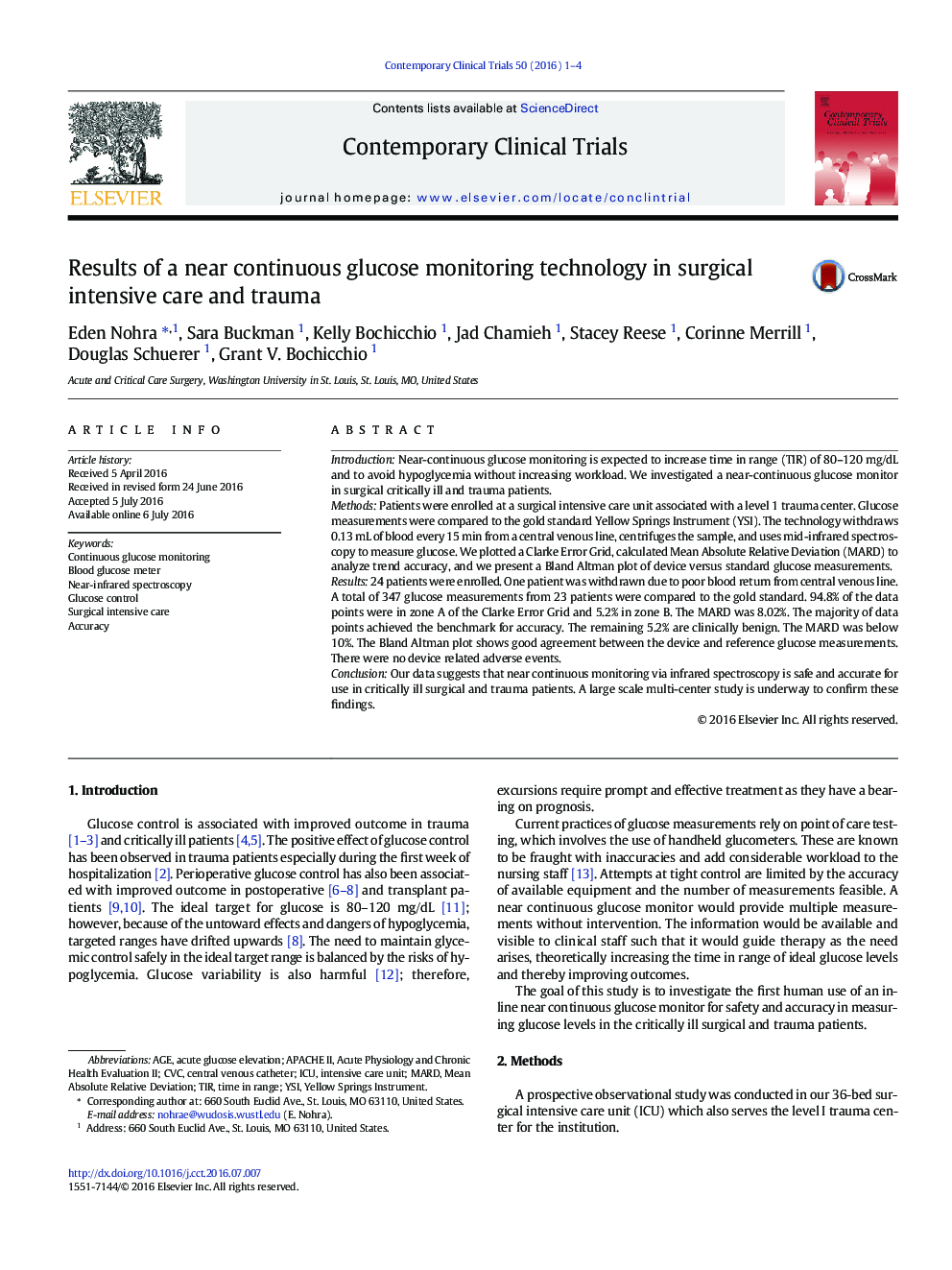| Article ID | Journal | Published Year | Pages | File Type |
|---|---|---|---|---|
| 3462584 | Contemporary Clinical Trials | 2016 | 4 Pages |
IntroductionNear-continuous glucose monitoring is expected to increase time in range (TIR) of 80–120 mg/dL and to avoid hypoglycemia without increasing workload. We investigated a near-continuous glucose monitor in surgical critically ill and trauma patients.MethodsPatients were enrolled at a surgical intensive care unit associated with a level 1 trauma center. Glucose measurements were compared to the gold standard Yellow Springs Instrument (YSI). The technology withdraws 0.13 mL of blood every 15 min from a central venous line, centrifuges the sample, and uses mid-infrared spectroscopy to measure glucose. We plotted a Clarke Error Grid, calculated Mean Absolute Relative Deviation (MARD) to analyze trend accuracy, and we present a Bland Altman plot of device versus standard glucose measurements.Results24 patients were enrolled. One patient was withdrawn due to poor blood return from central venous line. A total of 347 glucose measurements from 23 patients were compared to the gold standard. 94.8% of the data points were in zone A of the Clarke Error Grid and 5.2% in zone B. The MARD was 8.02%. The majority of data points achieved the benchmark for accuracy. The remaining 5.2% are clinically benign. The MARD was below 10%. The Bland Altman plot shows good agreement between the device and reference glucose measurements. There were no device related adverse events.ConclusionOur data suggests that near continuous monitoring via infrared spectroscopy is safe and accurate for use in critically ill surgical and trauma patients. A large scale multi-center study is underway to confirm these findings.
